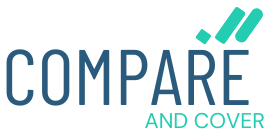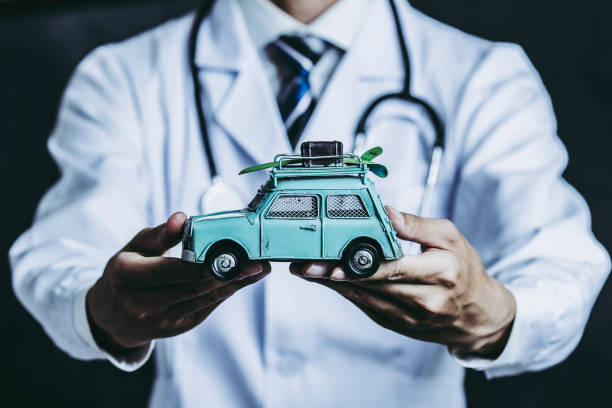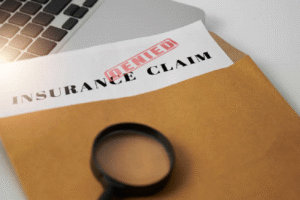Car accidents happen suddenly — sometimes in just a split second. And while the accident itself may be over quickly, the medical bills and recovery process can drag on for months or even years. So, it’s natural to wonder: does your auto insurance cover medical expenses after a car accident? The short answer is yes, but it depends on the kind of coverage you have.
Auto insurance isn’t a one-size-fits-all product. Different parts of your policy cover different things, and medical expenses are covered under specific types of coverage — some mandatory, some optional. In this article, I’ll walk you through exactly how auto insurance handles medical bills, what kinds of injuries and treatments it covers, and what you might need to think about to make sure you’re fully protected.
What Parts of Auto Insurance Cover Medical Expenses?
When it comes to paying for medical bills after a car accident, not all auto insurance coverage applies. Some parts of your policy might cover your injuries, while others are designed to protect you from legal liabilities or cover damage to your car. The key is knowing what’s what.
Here are the main types of auto insurance coverage that typically help with medical expenses:
1. Personal Injury Protection (PIP) — Also Called No-Fault Insurance
Personal Injury Protection, or PIP, is often referred to as “no-fault insurance.” This means that if you’re injured in a car accident — no matter who caused it — PIP will help pay your medical bills.
PIP usually covers:
-
Hospital visits, surgeries, doctor appointments, and other medical treatments related to the accident
-
Medical rehab, such as physical therapy
-
Lost wages if your injury prevents you from working
-
Funeral expenses, in tragic cases where the accident results in death
PIP is required in certain states known as “no-fault” states, including places like Florida, Michigan, and New York. If you live in one of these states, your auto insurance policy will almost certainly include PIP coverage.
The main advantage of PIP is that it speeds up payment for your medical costs because you don’t have to wait to find out who was at fault in the accident. It helps get you care faster without long legal battles.
2. Medical Payments Coverage (MedPay) — Optional But Helpful
Medical Payments Coverage, often called MedPay, is similar to PIP but usually simpler and with more limited benefits. It helps pay for medical bills related to a car accident, regardless of who’s at fault.
Unlike PIP, MedPay typically doesn’t cover lost wages or funeral costs — it’s mostly focused on medical bills. Also, MedPay is optional in most states, meaning you have to add it on to your policy if you want it.
MedPay can be a valuable add-on if you want a straightforward way to cover medical bills without relying entirely on your health insurance.
3. Liability Insurance — Covers Medical Bills for Others, Not You
Liability insurance is probably the part of your policy you hear about most. It’s mandatory in almost every state and covers injuries or damages you cause to other people in an accident.
Specifically, bodily injury liability insurance pays for medical bills, lost wages, and pain and suffering for other drivers, passengers, or pedestrians injured in an accident that you caused.
But here’s the important part: liability insurance does not pay for your own medical expenses. So, if you’re hurt in an accident and you’re at fault, your own medical bills won’t be covered by this.
4. Uninsured/Underinsured Motorist Coverage (UM/UIM) — Protection When Others Don’t Have Enough Coverage
Unfortunately, not everyone on the road carries insurance. When you’re hit by someone who has no insurance or doesn’t have enough coverage to pay your medical bills, uninsured/underinsured motorist coverage (UM/UIM) can step in.
UM/UIM helps pay your medical bills and sometimes other damages caused by an uninsured or underinsured driver.
Some states require this coverage, while others offer it as an optional add-on. The exact benefits and limits depend on your state and insurance company, so it’s worth checking your policy.

Real-Life Example: How Auto Insurance Helps After an Accident
Let’s say you’re stopped at a red light, and another driver rear-ends you, causing a back injury.
Here’s how the medical expenses might be covered:
-
Your PIP or MedPay coverage pays for your emergency room visit, diagnostic tests, and physical therapy sessions.
-
If the other driver was at fault and has liability insurance, their policy might reimburse your medical costs.
-
If the other driver doesn’t have insurance, your UM/UIM coverage could help cover your medical bills.
In many cases, these coverages work together to reduce your out-of-pocket costs.
What Medical Costs Are NOT Covered by Auto Insurance?
Auto insurance can be a big help, but there are limits. It generally does not cover:
-
Routine health care unrelated to the accident (you’ll need your health insurance for that)
-
Injuries resulting from racing or using your vehicle for business, unless you have special coverage for those activities
-
Medical issues that aren’t caused by a car accident, like an illness or injury unrelated to driving
Because of these exclusions, it’s important not to rely solely on your auto insurance for all medical expenses.
How Auto Insurance Works with Your Health Insurance
Here’s a little-known fact that can make a huge difference: often, your auto insurance and your health insurance work together to cover medical bills.
Usually, your auto insurance pays first for accident-related injuries, especially if you have PIP or MedPay. Then, if your auto insurance doesn’t cover everything (for example, if you hit your coverage limits), your health insurance may kick in to cover the rest.
This “coordination of benefits” can help minimize your expenses, but policies vary a lot. Some auto insurance policies have deductibles or limits on medical payments, so it’s crucial to understand exactly how your two insurances interact.

Why Reviewing Your Policy Matters
If you’re not sure what your auto insurance covers in terms of medical expenses, it’s a smart idea to review your policy now — before an accident happens.
Ask yourself:
-
Do I have PIP or MedPay coverage? If not, should I add it?
-
What are my coverage limits? Are they high enough to cover serious injuries?
-
Do I have uninsured motorist coverage in case I’m hit by someone without insurance?
-
How does my auto insurance work with my health insurance?
Making a small change today — like adding PIP or MedPay — could save you thousands of dollars and a lot of stress in the future.
Final Thoughts: Protect Yourself and Your Wallet
Car accidents can be scary and expensive. Medical bills pile up fast, and waiting on insurance claims or legal settlements can add to the frustration.
The good news? Auto insurance can help cover medical expenses — but only if you have the right coverage in place.
PIP and MedPay help with your own medical bills. Bodily injury liability protects others if you cause an accident. And uninsured/underinsured motorist coverage protects you when the other driver isn’t properly insured.
If you’re unsure about your coverage, don’t wait. Take the time to read your policy or talk to an insurance agent. Getting a free policy check-up could mean peace of mind and financial protection when you need it most.
Need help figuring it all out? I recommend reaching out to your insurance agent to review your current coverage and discuss options like adding PIP or MedPay. It’s one of the smartest steps you can take for your safety and financial well-being.





